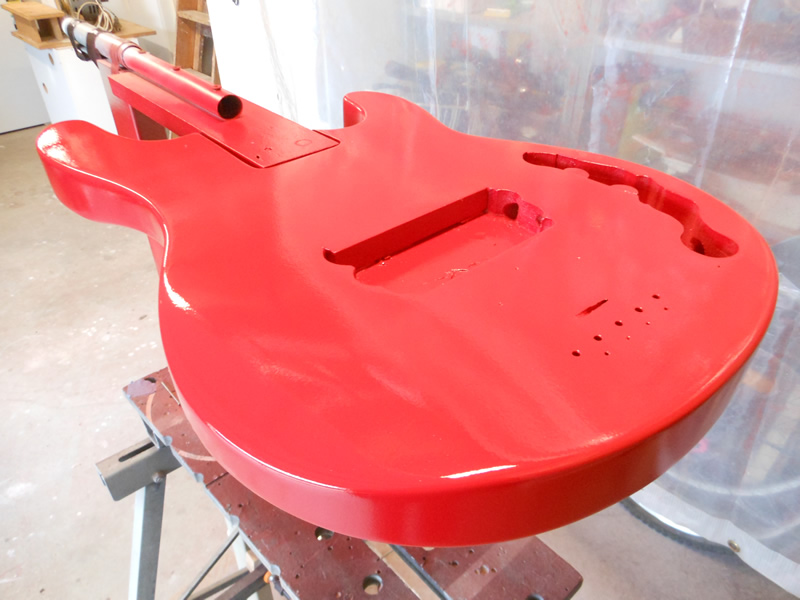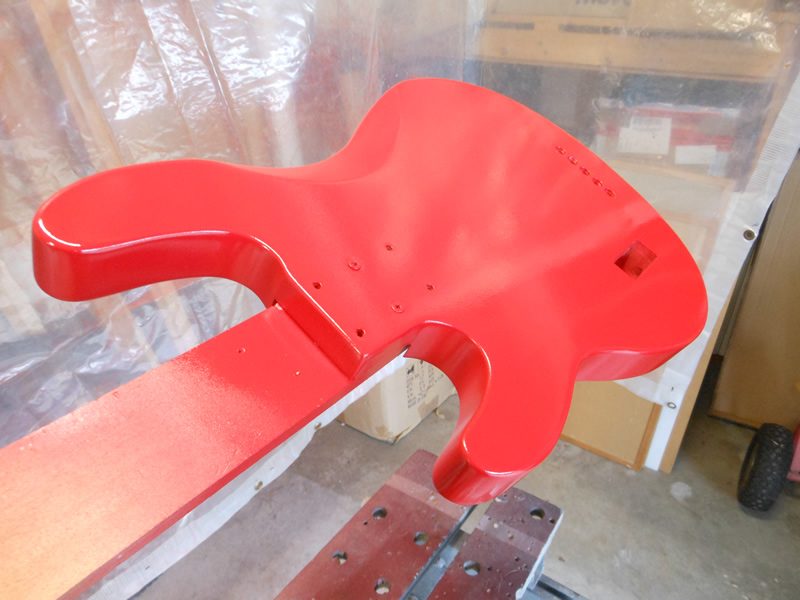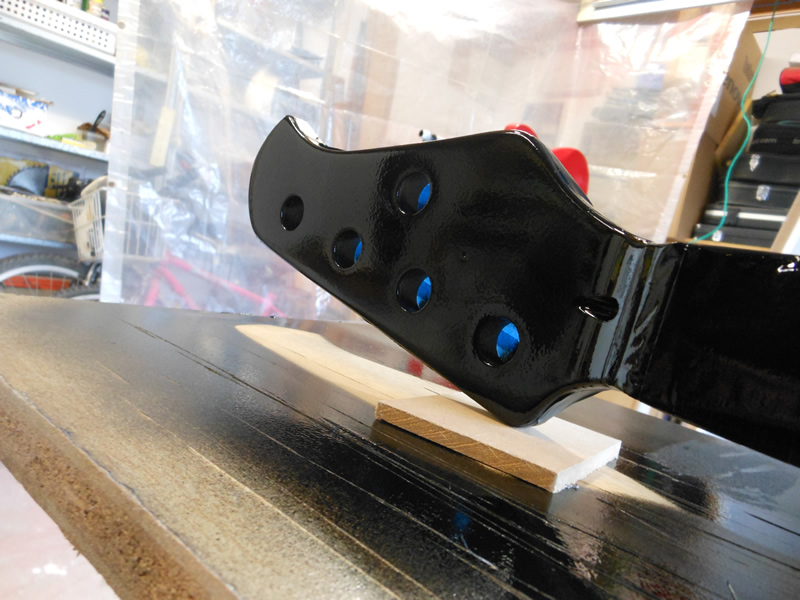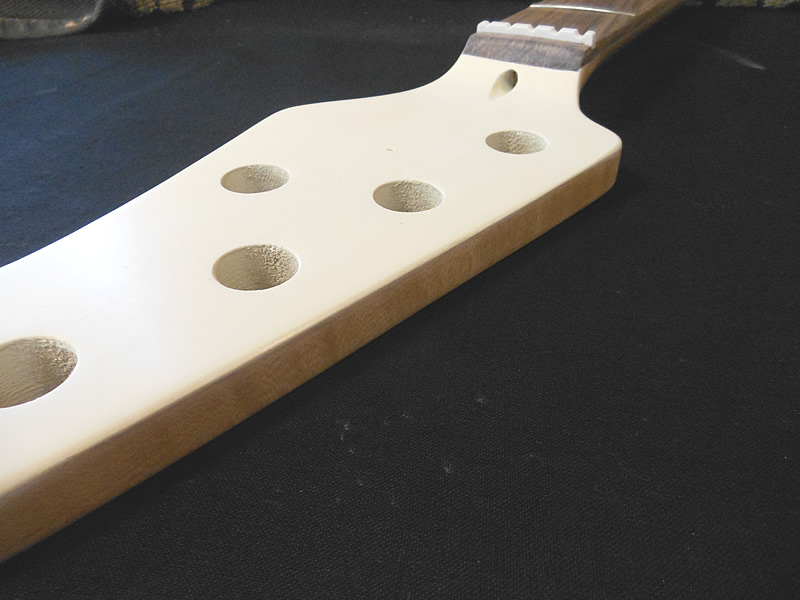During the initial phases of construction, I was still undecided about the colour scheme; my wife favouring an antique cream with tortoise shell scratch plate, but I gravitated to the Chilli red with white perloid scratch pate and black headstock of the 2004 limited edition Stingray 4. There was no 5 string version of this, so even as a replica, this MMB 5 is not going to get mistaken for the real thing.
One thing I decided right from the beginning was that I was not going to hang the guitar up to paint as many people do. This is inefficient and in my experience makes it hard to get an even coverage easily as it is in a fixed position.
My solution was to use a 360 degree rotisserie type system similar to that used by engine builders.
It was really easy to make, and holds the guitar rock solid in any position you want. This is particularly good for angling the instrument in to the light so you can see how much you are overlapping each coat etc.
I created a mini spray booth with a curtain of clear plastic sheeting on 3 sides of the spray zone. Plenty of light was coming in from all sides and the top.
After standard prep, I sprayed 5 coats beginning with all the edges first and allowing it to tack off before building up each subsequent light, full body coat about 15 minutes apart. The edges were sprayed with the body in the horizontal position, and the front and back in the vertical position. The beauty of this is that the aerosol can of paint is always in the upright position and delivering an even pressure pattern. Each coat was applied at 90 degrees to the previous, (vertical/horizontal using the adjustable nozzle arrangement) ensuring even coverage.
Headstock was prepared the same way as the body. After the satin polyurathane on the back/sides of the headstock and neck were fully cured and masked, two coats of British paints 4-in-1 were applied to the face, hand sanded with 800G followed by 2 more coats of Septone Primer Filler. Final coat was wet sanded with 1500G before the black lacquer was applied.
The same spraying procedure was used with the clear coats, with 4 coats being applied. For the final clear coat the body was in the horizontal position, allowing slightly thicker coats without the fear of runs and drips. The technique still has you constantly moving the spray head, but just a little slower.
I’m going to leave the body to fully dry until next weekend before I start the polishing process.
Starting to look good.













 Reply With Quote
Reply With Quote






